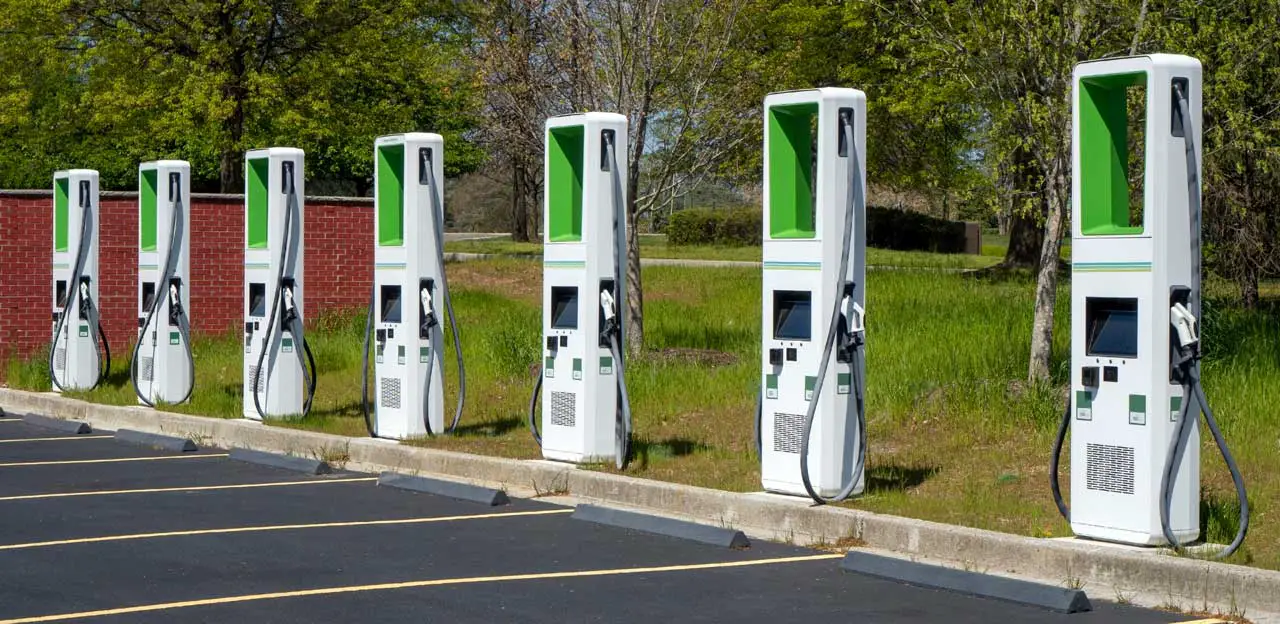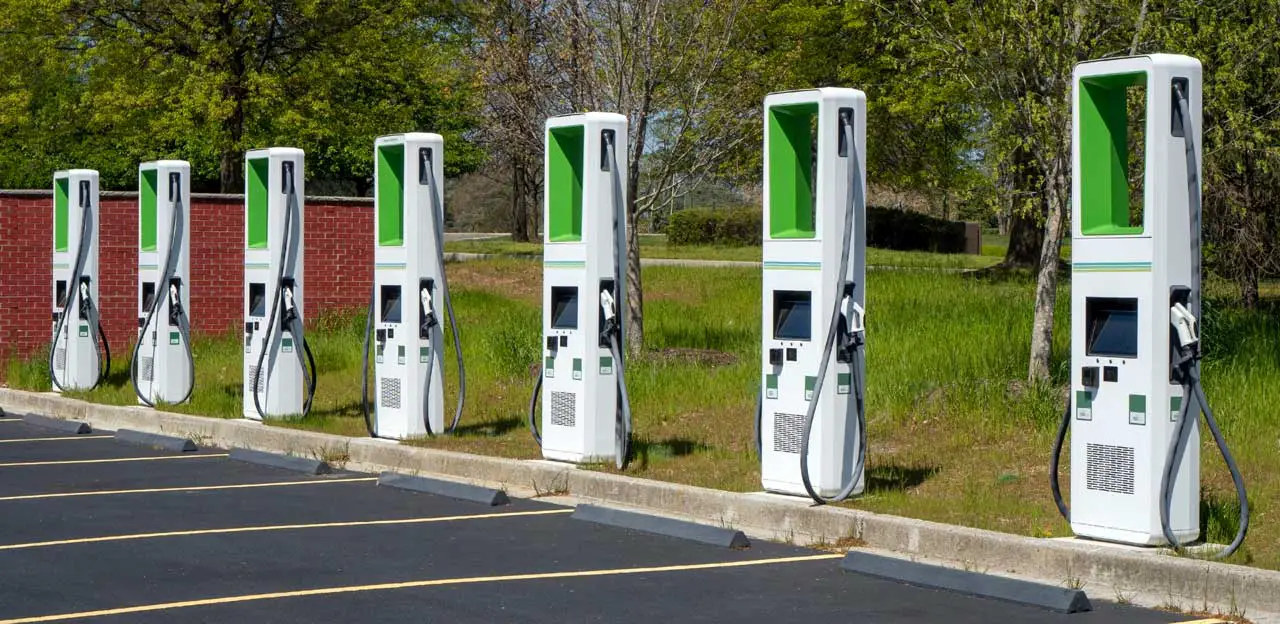Electric Avenue: Comparing EV Brands & Their Charging Networks.
As the global transition to electric vehicles (EVs) accelerates, one of the most important factors for both consumers and manufacturers is the charging infrastructure that supports these vehicles.


As the global transition to electric vehicles (EVs) accelerates, one of the most important factors for both consumers and manufacturers is the charging infrastructure that supports these vehicles.
While range and performance are crucial in selecting an electric car, the availability, speed, and convenience of charging networks are just as important for everyday use.
Electric Avenue, the metaphorical road toward a sustainable future, is lined with a growing number of EV brands, each striving to differentiate itself through innovation, design, and, critically, their proprietary or partner charging networks.
We will compare the charging networks of some of the leading EV brands—Tesla, Rivian, Ford, and others—examining how they shape the ownership experience, influence purchase decisions, and ultimately impact the future of electric mobility.
1. Tesla: The Supercharger Network Pioneer
When it comes to charging infrastructure, Tesla is a pioneer and continues to set the standard for convenience and efficiency.
Tesla’s proprietary Supercharger network is widely regarded as one of the most extensive and reliable fast-charging systems in the world.
Key Features of Tesla’s Supercharger Network:
- Global Coverage: Tesla operates over 50,000 Supercharger stalls globally, with a significant concentration in North America, Europe, and China. This extensive coverage means Tesla drivers are rarely far from a charging station.
- High Charging Speeds: Tesla’s Superchargers offer high-speed DC fast charging, with V3 Superchargers delivering up to 250 kW. This allows Tesla vehicles to add around 170 miles of range in 15 minutes, depending on the model.
- Integrated Charging Experience: Tesla owners can seamlessly navigate to the nearest Supercharger using the car’s built-in navigation system, which provides real-time data on station availability and charging times. Payment is automatically processed through the Tesla account, making charging hassle-free.
- Opening to Other EVs: Recently, Tesla has started opening parts of its Supercharger network to non-Tesla EVs, primarily in Europe. This is a significant development as it offers more options to other EV drivers, though availability and compatibility may vary.
Impact on the Tesla Brand:
Tesla’s robust and proprietary Supercharger network gives the company a significant advantage in the EV market.
The ease and convenience of charging at Tesla stations have helped solidify the brand’s dominance in the EV space, offering peace of mind to long-distance drivers and enhancing the overall user experience.
Tesla’s early investment in charging infrastructure has paid off, as it continues to attract new customers based on its unparalleled network reliability.
2. Rivian: Adventure-Focused Charging with Rivian Adventure Network
Rivian, a newcomer to the EV market, has positioned itself as an adventure vehicle brand, targeting outdoor enthusiasts with its all-electric pickup trucks and SUVs.
To complement its vehicles, Rivian has developed the Rivian Adventure Network, focusing on remote locations and off-the-beaten-path destinations.
Key Features of Rivian’s Charging Network:
- Focus on Remote Locations: The Rivian Adventure Network is designed to provide fast charging in remote areas where EV infrastructure is typically sparse. This aligns with Rivian’s brand as an off-road, adventure-focused automaker.
- High-Speed DC Fast Charging: The network offers fast charging with speeds up to 200 kW, which will eventually be upgraded to 300 kW. This allows Rivian vehicles to gain significant range in a short time, making them practical for road trips and outdoor excursions.
- Exclusive to Rivian Owners (for now): Like Tesla, Rivian’s network is currently exclusive to its vehicles, offering a seamless experience for its owners. Over time, the company may open its network to other EV brands.
- Waypoint Chargers: In addition to fast-charging stations, Rivian is also deploying Waypoint chargers, which are Level 2 chargers located at parks, hotels, and other locations frequented by travelers. These chargers are available to all EVs, further expanding the network’s reach.
Impact on the Rivian Brand:
Rivian’s charging network is crucial to its identity as a vehicle designed for adventure. The focus on remote charging stations helps differentiate Rivian from other EV manufacturers, especially for customers who enjoy outdoor activities. By investing in charging infrastructure early, Rivian ensures its customers can embark on off-road adventures without range anxiety.
3. Ford: BlueOval Charging Network and Public Partnerships
Ford, a traditional automaker with a long history in the internal combustion engine market, is rapidly transitioning to electric vehicles with models like the Mustang Mach-E and the all-electric F-150 Lightning.
Instead of building its own proprietary charging network, Ford has opted for a partnership approach by creating the BlueOval Charging Network.
Key Features of Ford’s Charging Network:
- Largest Public Charging Network: Ford’s BlueOval Charging Network isn’t a proprietary network like Tesla’s or Rivian’s. Instead, it aggregates over 84,000 charging stations from multiple providers, including Electrify America, EVgo, and ChargePoint, making it one of the largest charging networks in North America.
- Plug & Charge: Ford’s EVs support the Plug & Charge feature, which enables seamless payment and charging initiation. This functionality is available at compatible stations and simplifies the charging process for Ford owners.
- FordPass App: The FordPass app allows drivers to locate charging stations, monitor charging progress, and make payments through a single interface. It consolidates various charging providers under one umbrella for convenience.
- Charging Partnerships: Ford’s partnerships with companies like Electrify America ensure that its drivers have access to fast-charging options across the country, with speeds of up to 350 kW at certain stations.
Impact on the Ford Brand:
By leveraging existing charging infrastructure through partnerships, Ford offers its customers access to a vast network without the need for significant capital investment in building proprietary stations.
This strategy provides flexibility and coverage but can be less seamless than the Tesla or Rivian experience, where network exclusivity and integration are stronger selling points.
However, Ford’s approach enables a wide range of charging options, helping ease the transition for traditional ICE vehicle owners.
4. Volkswagen: Electrify America and Global Expansion
Volkswagen (VW) is making a significant push into the EV market with its ID series, including the ID.4 and future ID.Buzz.
The company’s charging infrastructure is primarily tied to its investment in Electrify America, a network created as part of VW’s settlement for its diesel emissions scandal.
Key Features of Electrify America:
- High-Speed Charging: Electrify America offers ultra-fast DC charging, with speeds of up to 350 kW. This allows EVs, including VW models, to charge at some of the highest speeds available in public networks.
- Widespread Coverage in the U.S.: Electrify America has over 3,500 charging stations in the U.S., with plans for significant expansion. The network is strategically placed along highways and in urban centers, catering to both long-distance travelers and daily commuters.
- Open to All EVs: Unlike Tesla’s exclusive Supercharger network, Electrify America is open to all EVs, providing a convenient option for any driver looking for fast-charging solutions.
- Volkswagen’s Global Plans: Beyond Electrify America, Volkswagen is investing heavily in expanding its charging infrastructure in Europe and other markets through its We Charge network and partnerships with Ionity, which provides high-speed charging across Europe.
Impact on the Volkswagen Brand:
Volkswagen’s investment in Electrify America and its broader global charging initiatives signal its commitment to the EV transition.
By creating a robust charging network in the U.S. and Europe, VW is well-positioned to support its growing lineup of EVs.
The open nature of Electrify America also ensures that the charging infrastructure benefits the wider EV ecosystem, not just VW customers.
5. Other EV Brands: Charging Partnerships and Emerging Networks
Several other automakers, including BMW, Audi, and General Motors (GM), are also entering the electric vehicle market and adopting various approaches to charging infrastructure.
BMW and Audi:
- Both BMW and Audi have partnered with networks like Ionity in Europe and Electrify America in the U.S. to provide charging solutions for their customers. Audi offers complimentary charging on Electrify America for a certain period after vehicle purchase, helping to ease the transition for new EV owners.
General Motors:
- GM is investing heavily in charging infrastructure as part of its Ultium Charge 360 initiative, which aggregates over 60,000 public chargers across the U.S. and Canada. The company has also partnered with EVgo to expand fast-charging stations for its upcoming Ultium battery-powered vehicles, including the Hummer EV and Chevrolet Silverado EV.
Impact on Emerging EV Brands:
These automakers, by leveraging public charging networks and forming partnerships, provide their customers with flexibility and convenience.
However, they face the challenge of ensuring that these third-party networks offer consistent performance and availability, which can impact the overall user experience compared to brands with proprietary networks.
Conclusion: The Future of EV Charging Networks
The race to electrify transportation is as much about building robust charging infrastructure as it is about designing innovative vehicles.
Tesla’s Supercharger network remains the gold standard for its seamless integration, speed, and coverage, but Rivian is carving out a niche with its adventure-focused charging stations.
Brands like Ford, Volkswagen, and GM are taking a more collaborative approach by partnering with public networks, allowing them to scale quickly without the massive upfront investment in proprietary infrastructure.
As the EV market continues to grow, we are likely to see further expansion and integration of charging networks, with a focus on making electric vehicle ownership as convenient as owning a tradition




